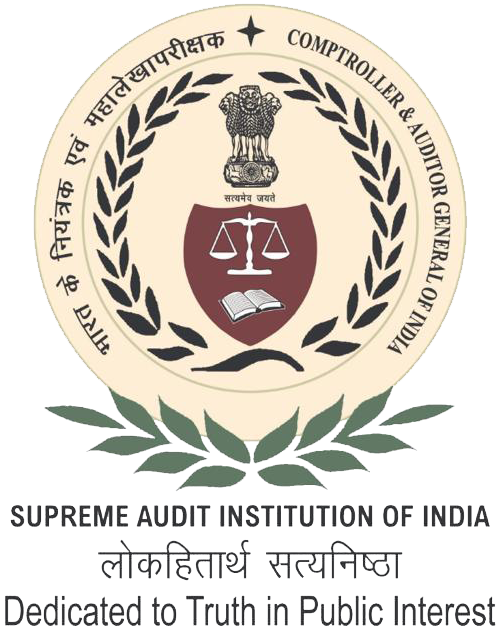दिनांक 21.5.2020 से केन्द्रीय एवं राज्य लेखापरीक्षा कार्यालयों की पुना:संरचना के फलस्वरूप, भारतीय लेखापरीक्षा एवं लेखा विभाग में राज्य सरकारों की लेखापरीक्षा व्यवस्था को संशोधित किया गया है।
प्रधान महालेखाकार (लेखापरीक्षा-II), कर्नाटक, बैंगलोर के कार्यालय को कर्नाटक में विभिन्न समूहों के अंतर्गत आने वाले विभागों की लेखापरीक्षा का कार्य सौंपा गया है, जैसा कि प्रत्येक समूह के कार्यों के अंतर्गत विस्तृत है। यह कार्यालय कर्नाटक सरकार के विभिन्न विभागों के प्रशासनिक नियंत्रण के अंतर्गत आने वाले वाणिज्यिक उपक्रमों और स्वायत्त निकायों की भी लेखापरीक्षा करता है।
लेखापरीक्षा, लेखापरीक्षा योजना और लेखापरीक्षा प्रक्रिया
लेखापरीक्षा
कार्यालय तीन प्रकार की लेखा परीक्षा आयोजित करता है।
अनुपालन/नियमितता लेखापरीक्षा
वित्तीय सत्यापन लेखापरीक्षा
निष्पादन लेखापरीक्षा
अनुपालन/नियमितता लेखापरीक्षा दो स्तरों पर की जाती है। राजकोष से प्राप्त विभिन्न विभागों के खातों की केंद्रीकृत नमूना लेखापरीक्षा (स्तरीकृत यादृच्छिक नमूनाकरण पर आधारित नमूना)। क्षेत्र स्तरीय लेखापरीक्षा लेखापरीक्षा दलों द्वारा प्राथमिक संवितरण/संग्रहण इकाइयों का दौरा करते हुए और प्राथमिक अभिलेखों की लेखापरीक्षा की जाती है। इस लेखापरीक्षा में विधानमंडल द्वारा बनाए गए नियमों और विनियमों के अनुपालन पर जोर दिया जाता है।
वित्तीय सत्यापन लेखापरीक्षा में, कार्यालय बाहरी सहायता प्राप्त परियोजनाओं (विश्व बैंक, एशियाई विकास बैंक और अन्य विदेशी एजेंसियों) और केंद्र से सहायता प्राप्त/वित्त पोषित परियोजनाओं के संबंध में राज्य सरकार द्वारा दिए गए खातों पर प्रमाण पत्र के रूप में कार्यालय एक राय व्यक्त करता है।
निष्पादन लेखापरीक्षा में, कार्यालय किसी विभाग द्वारा कार्यान्वित की गई योजना या गतिविधि को लेता है। इसमें सचिवालय स्तर (संकल्पना) से लेकर क्षेत्र स्तर (कार्यान्वयन एजेंसी) तक के अभिलेखों का विश्लेषण करना शामिल होगा। उपयुक्त सिफारिशों के साथ योजना या गतिविधि के उद्देश्यों की उपलब्धि के स्तर का पता लगाने के लिए संपूर्ण गतिविधि/योजना का व्यापक विश्लेषण किया जाता है।
लेखापरीक्षा योजना
प्रत्येक वर्ष लेखपरिश्रिति इकाई के जोखिम मूल्यांकन के आधार पर एक वार्षिक लेखापरीक्षा योजना तैयार की जाती है, जो निम्नलिखित मापदंडों पर की जाती है:
वित्तीय भौतिकता
अंतर्निहित जोखिम
नियंत्रण जोखिम
इकाई से झड़ी जोखिमों के मूल्यांकन के बाद, लेखापरीक्षिती इकाइयों को 4 श्रेणियों में विभाजित किया जाता है, अर्थात वार्षिक, द्विवार्षिक, त्रैवार्षिक और अन्य। इन इकाइयों को क्षेत्र के दौरे के लिए लेखापरीक्षा दलों के त्रैमासिक दौरा कार्यक्रम तैयार करके आवधिकता के आधार पर लेखापरीक्षा के लिए नियोजित किया जाता है।
कार्यालय उपरोक्त मापदंडों पर प्रत्येक विभाग द्वारा कार्यान्वित योजनाओं, कार्यों और गतिविधियों की पहचान भी करता है और प्रत्येक विंग उपलब्ध मानव संसाधन को ध्यान में रखते हुए विभाग की एक या दो योजनाओं या गतिविधियों का निष्पादन लेखापरीक्षण करता है।
लेखापरीक्षा प्रक्रिया
एक केंद्रीय लेखापरीक्षण दल राजकोष से प्राप्त लेखाओ और वाउचरों की नमूना जांच करता है, जिसमें सामान्य वित्तीय नियमों और विभागीय संहिताओं का अनुपालन होता है। ऐसे लेखापरीक्षण परीक्षणों के परिणाम लेखापरीक्षण टिप्पणी के रूप में विभाग को सूचित किए जाते हैं।
क्षेत्र स्तर पर प्राथमिक अभिलेख जिनसे लेखापरीक्षिती इकाइयां कोषागार को वाउचर प्रदान करती हैं, नमूना पद्धति पर परीक्षण जांच के अधीन होती हैं, जिसमें वित्तीय भौतिकता के आधार पर दो महीने के खातों का चयन किया जाता है। सभी प्राथमिक खाते जैसे स्टोर खाते, विनिर्माण खाते आदि भी लेखापरीक्षा जांच के अधीन होते हैं। क्षेत्र लेखापरीक्षा के बाद, कार्यालय के मुख्यालय अनुभागों में मसौदा रूप में लेखापरीक्षा टिप्पणियां प्राप्त होती हैं, जिनकी सटीकता और शुद्धता के लिए आगे जांच की जाती है। यह निरीक्षण या स्थानीय लेखापरीक्षा रिपोर्ट अनुपालन के लिए उप महालेखाकार के हस्ताक्षर के तहत सूचना के लिए नियंत्रण कार्यालय को एक प्रति विधिवत समर्थन करने के बाद लेखापरीक्षिती इकाई को जारी की जाती है। प्रत्येक चरण में विभाग या लेखापरीक्षिती इकाई को लेखापरीक्षा टिप्पणियों पर अपनी स्थिति बताने का हर अवसर दिया जाता है।
उपरोक्त प्रक्रियाओं का पालन तब भी किया जाता है जब किसी योजना का निष्पादन लेखा-परीक्षण लेखा-परीक्षण के लिए लिया जाता है। सरकार के सचिव को शुरू में एक प्रवेश सम्मेलन के लिए आमंत्रित किया जाता है और लेखा-परीक्षण के परिणामों पर एक निकास सम्मेलन में चर्चा की जाती है।
विभाग/लेखापरीक्षित इकाई के उत्तरों के आधार पर, लेखापरीक्षा टिप्पणियों को या तो निपटाया जाता है या आगे की अनुवर्ती कार्रवाई के लिए नोट किया जाता है। महत्वपूर्ण टिप्पणियों को हर साल के अंत में प्रकाशित एक लेखापरीक्षा रिपोर्ट में शामिल किया जाता है जिसे विधानमंडल के समक्ष रखने के लिए राज्यपाल को प्रस्तुत किया जाता है।

